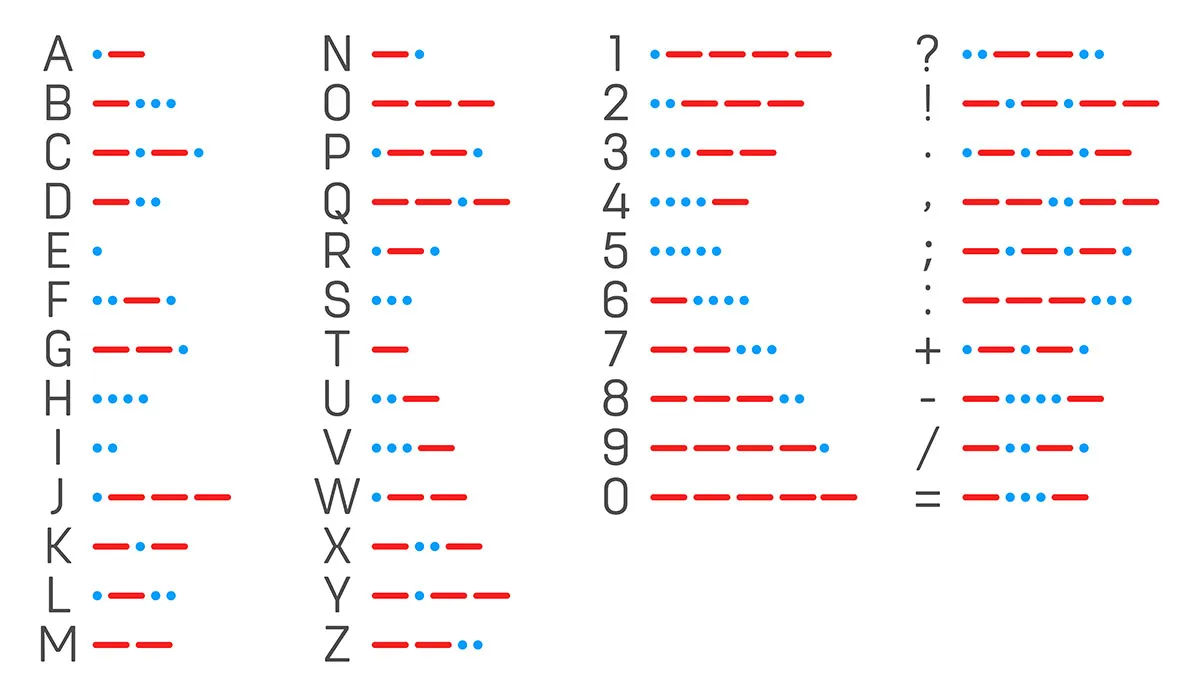Morse Keyboard
Bombers aren't flying overhead, but we can type like it

Efficiency
That’s what this is. 1 Key all the combinations. Is there any reason to even use a 100% keyboard anymore? I feel the 1% keyboard is going to revolutionize home computing!
On a real note, this keyboard was a blast to make. Morse code is harder than I’d like to admit but it functions pretty well I think! I made this curious little keyboard as a response to yet more requests from my binary keyboard video.
This 1 key keyboard is typed on using morse code via straight keying. It has support for all normal ascii characters as well as some modifiers.
The Code
Touching briefly on the code which is, by all means, hot garbage. But I did want to mention the way I’m translating morse -> keycodes and keeping track of that.
Morse Code
For this to make sense here is a quick run through on morse code. There are 3 “inputs” in morse: dits (aka dots represented as . ), dahs (aka dashes represented as -) and no input. Morse being time based means no input is an input.
dits are a short press on the key and dahs are a long press on the key (usually 3x as long as a dit)
Characters are just made up of dits and dahs ie a which is .- but how do I know the character is done? We wait approximately 1 dit worth of time and that signals the end of a character. What about words? Words are still waiting but usually 3 dits worth of time.
Tracking and converting morse code
While brainstorming how to keep track of the dits and dahs and convert them into their corresponding characters. I briefly toyed with the idea of using an integer and bit-shifting to track the dits and dahs. For example
- A could be 1
- B could be 1000
- C could be 1010
- E could be 0

But this doesn’t work when we get to fun characters like H which is 0000 so how would we track that? Maybe start the integer off at 1 and bitshift left each time hit the key? Or create a struct that has the code and character attached to it and a map linking them?
I went for a weird approach. I still wanted a simple primitive datatype to store the current character and map in. So keeping with the single integer for tracking the value, I decided on a 2 dimensional int array for the keymap.
The idea was to modify my binary idea from earlier but have a different keymap for values for every set of characters that required the same number of inputs (dits or dahs) ex:
const int KEYMAP[6][64] = {
// 1 bit maps
{
(int)'e', (int)'t'
},
// 2 bit maps
{
(int) 'i', (int) 'a', (int) 'n', (int) 'm'
},
// 3 bit maps
{
(int) 's', (int) 'u', (int) 'r', (int) 'w',
(int) 'd', (int) 'k', (int) 'g', (int) 'o'
},
// 4 bit maps
{
(int) 'h', (int) 'v', (int) 'f', -1,
(int) 'l', -1, (int) 'p', (int) 'j',
(int) 'b', (int) 'x', (int) 'c', (int) 'y',
(int) 'z', (int) 'q'
},
//....
This way we can still map the values by just using bit shifting. Say I want to type in A so I enter in a dit followed by a dah: .- this corresponds to 01 or just 1. We look up in the keymap like: KEYMAP[NUMBER_OF_INPUTS][VALUE_OF_INPUTS]
which in this case would be KEYMAP[2][1] because we entered 2 dits or dahs and they resulted in 01. We would now get the int keycode for a as a result!
Actual code ex:
// Set preview letter for display
// letterIndex is current number of inputs+1
// letterState is the bitshifted number
char preview = ' ';
if (letterIndex >= 1) {
preview = (char)KEYMAP[letterIndex-1][letterState];
}
The Case
The case was designed completely in onshape the cad tool a browser. Can’t recommend onshape enough for that, no installation or hassle. Not sponsored I just like the product. If you’d like to export it or derive your own in onshape here is the link. morse keyboard case

Make one / Contribute
If you’d like to make your own or contribute feel free to do so here!





Share this post
Facebook
Reddit
LinkedIn